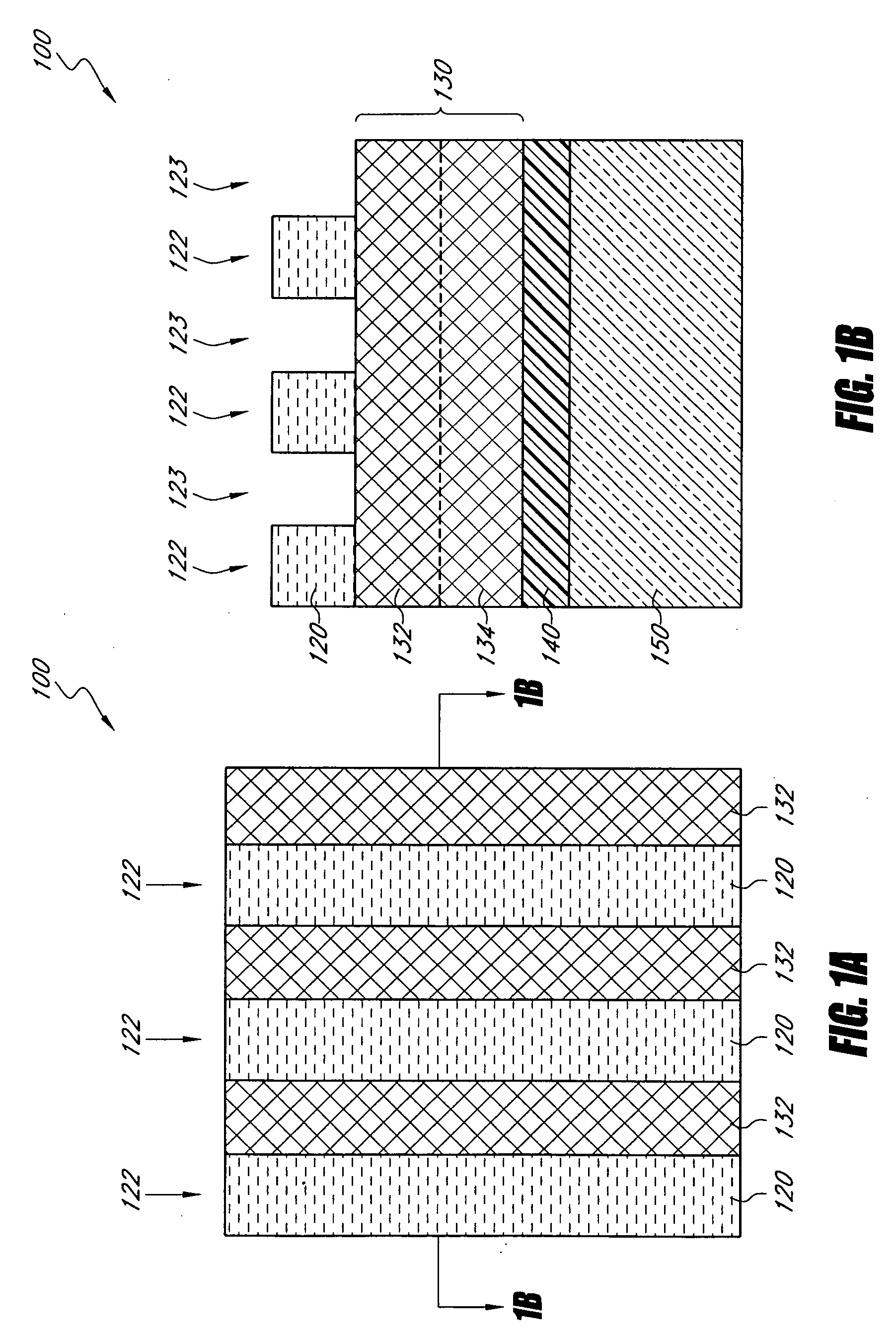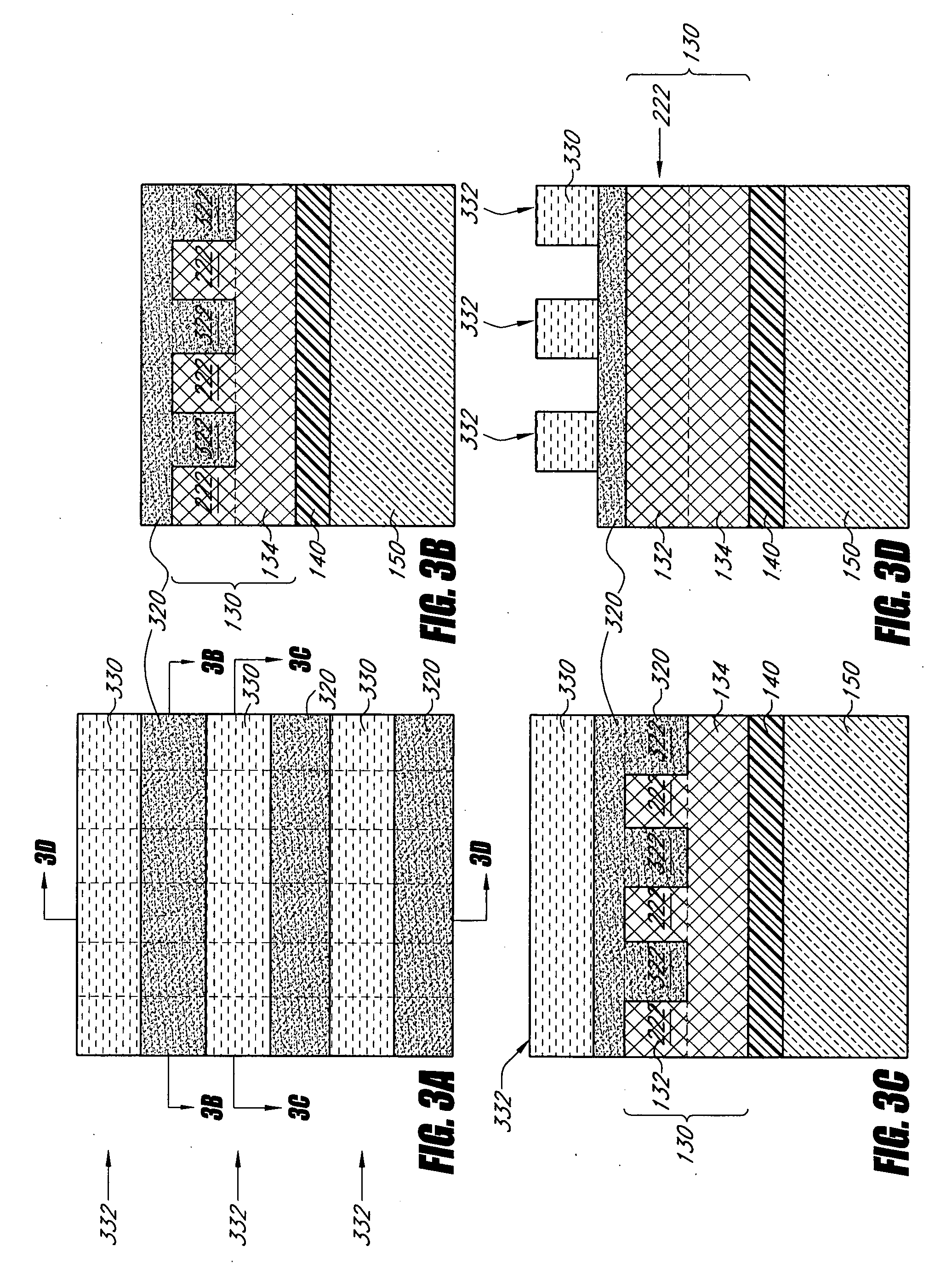Methods for forming arrays of small, closely spaced features
- Summary
- Abstract
- Description
- Claims
- Application Information
AI Technical Summary
Benefits of technology
Problems solved by technology
Method used
Image
Examples
example
[0120]FIGS. 13 and 14 are scanning electron micrographs (SEMs) illustrating a dense array of small holes formed according to the described embodiments. These SEMs show structure that can be used to make holes having a pitch of approximately 200 nm by 250 nm. The features shown have a width of approximately 95 nm in the critical dimension.
[0121] To achieve the structure shown, the process described in FIGS. 1-6 was generally followed, with the exception that an extra layer of DARC was used above the temporary layer 130. The extra DARC layer was approximately 1200 angstroms (A) thick. The half-etch process resulting in multiple exposed layers (depicted in FIG. 6E, for example) was accomplished in the DARC layer and then transferred into the underlying temporary layer 130 (which was formed from transparent carbon (TC) in this example). In FIG. 13, the DARC layer has been removed after the pattern was extended into the TC layer. In this example, the TC is approximately 3,000 Å thick an...
PUM
 Login to View More
Login to View More Abstract
Description
Claims
Application Information
 Login to View More
Login to View More - R&D
- Intellectual Property
- Life Sciences
- Materials
- Tech Scout
- Unparalleled Data Quality
- Higher Quality Content
- 60% Fewer Hallucinations
Browse by: Latest US Patents, China's latest patents, Technical Efficacy Thesaurus, Application Domain, Technology Topic, Popular Technical Reports.
© 2025 PatSnap. All rights reserved.Legal|Privacy policy|Modern Slavery Act Transparency Statement|Sitemap|About US| Contact US: help@patsnap.com



